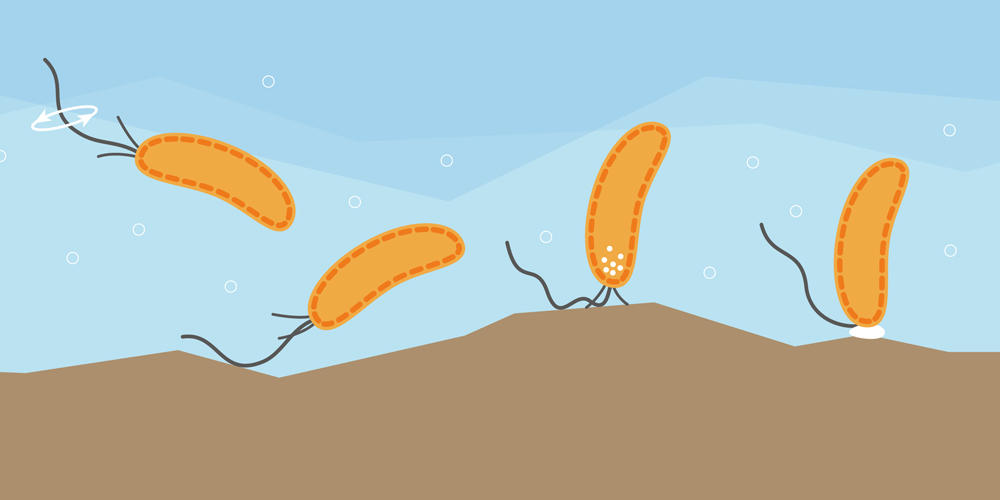Swiss researchers discover ‘sense of touch’ in bacteria

University of Basel researchers have identified how tiny bacteria recognise and react to surfaces with which they come into contact – a surprising discovery that could help scientists better understand infections in humans.
By studying a bacterium called Caulobacter, the team discovered that the tiny microorganisms not only respond to chemical signals, but also possess a sense of touch, a university statement saidExternal link. The bacteria can recognise surfaces and respond within seconds – a mechanism that is also used by pathogens to colonise and attack their host cells.
“This is an impressive example of how rapidly and specifically bacteria can change their behaviour when they encounter surfaces,” said Urs JenalExternal link, a professor at the university’s Biozentrum, in the statement.
Motor mechanism
Swimming Caulobacter have a whip-like rotating motor in their cell envelope called the flagellum. The rotation of the flagellum enables the bacteria to move in liquids. This mechanism also allows the bacteria to “feel”, which came as a surprise of the researchers.
Motor rotation is powered by proton flow into the cell via ion channels. When swimming cells touch surfaces, the motor propelling the flagellum is disturbed, which disrupts the proton flux.
This signals to the bacteria to produce an adhesive substance that firmly anchors the bacteria on the surface within a few seconds.
Infectious disease
Different tissues and surfaces of the body, like the mucous membranes or the intestinal lining, are entry gates for disease-causing bacteria. The first few seconds – the moment of touch – are often critical for successful infection.
Even through Caulobacter is a harmless type of bacteria, the findings are highly relevant for understanding and controlling infectious diseases. “What we discovered in Caulobacter also applies to important human pathogens,” said Jenal.
The findings were published in the prestigious journal ScienceExternal link.

In compliance with the JTI standards
More: SWI swissinfo.ch certified by the Journalism Trust Initiative


You can find an overview of ongoing debates with our journalists here. Please join us!
If you want to start a conversation about a topic raised in this article or want to report factual errors, email us at english@swissinfo.ch.